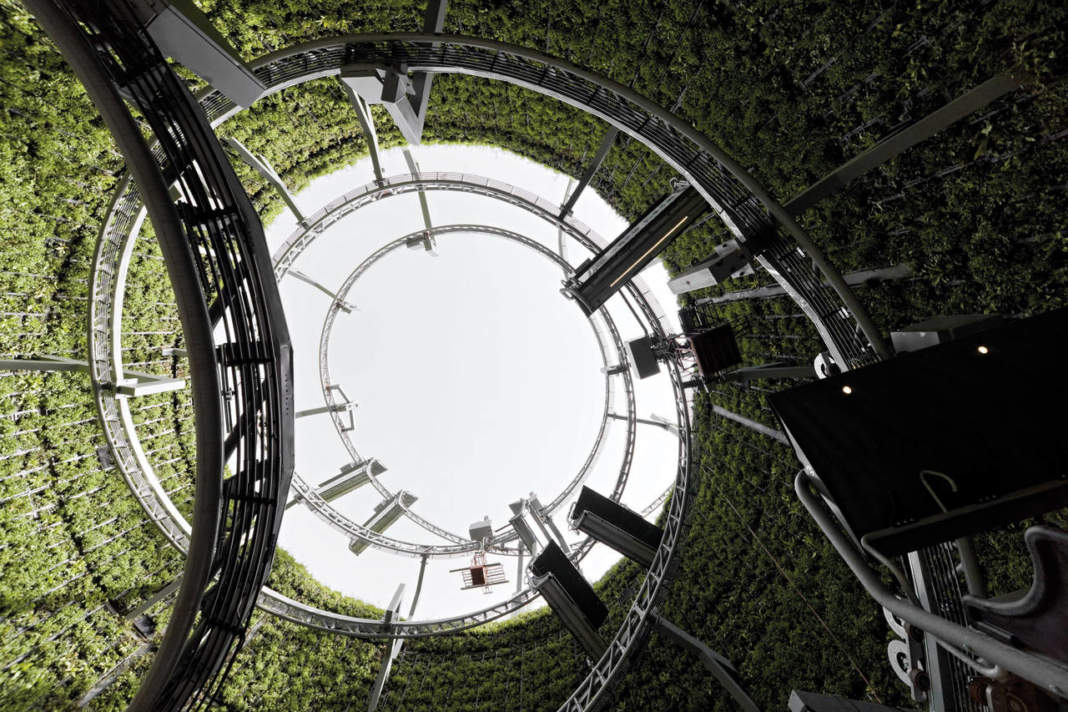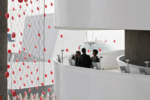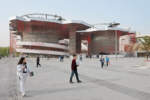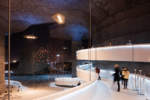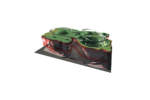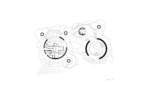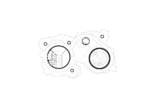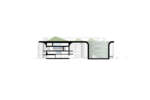architect: Buchner Bründler Architects
location: expo 2010 shanghai - zone C
year: 2010
The Swiss Pavilion at Expo 2010 in Shanghai is enclosed in a semi-transparent façade that produces electricity using cutting-edge solar technology and turns solar radiation into a visible form of energy. The electricity is drawn from by light-emitting diodes that flash in varying quantities, constellations and durations depending on the available light and its intensity. The diodes flash individually, throwing coloured shadows on to the wall behind, and together light up the whole façade, sweeping across the curtain in swarms or other patterns. As a result of this special light display and the reaction of the façade, visitors will be able to perceive Switzerland as an innovative, technologically advanced and ecologically aware country even before they enter the Pavilion. As they approach and enter the Pavilion, the Swiss city concept becomes gradually clear: a hybrid, interconnected urban area in which nature and technology, innovation and sustainability function and interact in symbiosis. The façade is suspended from a height of 20 m and is made up of a coarse metal netting to which 11,000 cells are attached in a random fashion. Each cell contains – based on a pattern inspired by a map of Switzerland – an electronic circuit board that feeds the interactive light-play on the façade: solar cells, two double-layer condensors (highperformance energy accumulators), a light-emitting diode and sensors that react to light and activity in neighbouring cells.
The solar cells produce electricity that is then stored in the condensor and used when the lightemitting diode flashes. As a result of the sensors the cells react to light regardless of its intensity. If the light falling on one part of the façade increases, the light sensors transmit an impulse, thus causing thelight-emitting diodes on that part of the façade to flash. The cells light up for a longer or shorter period of time, depending on the intensity of the light they receive. The intensity of the light emitted by the diodes varies according to the energy stored and the level of ambient light. During the night they react in the same way due to the energy stored in the accumulators.
Buchner Bründler architects was established in 1997 by Daniel Buchner and Andreas Bründler in Basel. In the first few years the architects were able to carry out a
broad range of building projects. The Lofthaus in Basel was built in 2002 and received the award for Good Buildings in the Canton of Basel and a year later the Bauwelt
prize. The Dachaufbau in Lupsingen received the special award for Good Buildings in the Canton of Basel in 2002. In 2003 Daniel Buchner and Andreas Bründler were accepted into the Federation of Swiss Architects and received the Swiss Art Award in the architecture section. Several successful competitions led to the first public building contracts. The building of a pavilion in the Architecture Park in Jinhua was the first project in China in 2006. The architects also received the award of contract for the Swiss Pavilion at the world exhibition in Shanghai in 2010 together with Element Design as well as for the building of a villa in Ordos in Mongolia. The architects received an award for the best conversion in 2008 for the conversion of a residential estate on the Sevogelstrasse in Basel. The residential house in Aesch was awarded in the same year with the Award for Good Buildings in the Canton of Basel.


